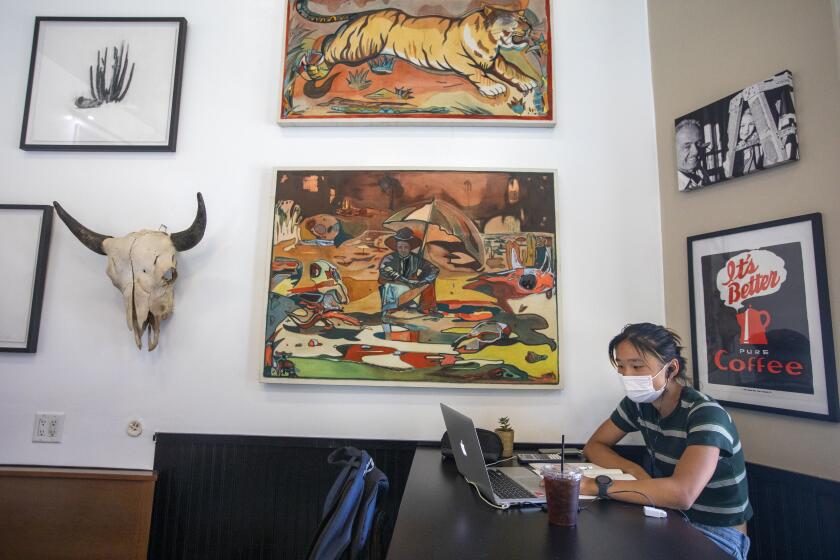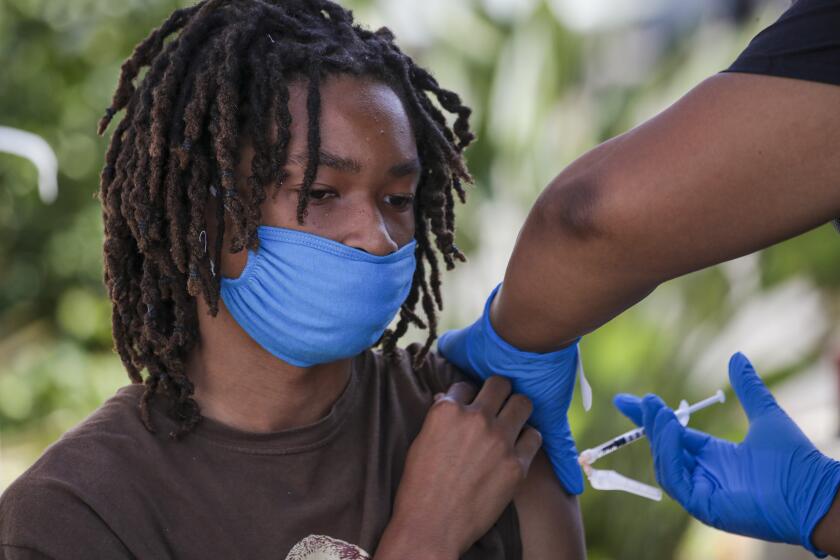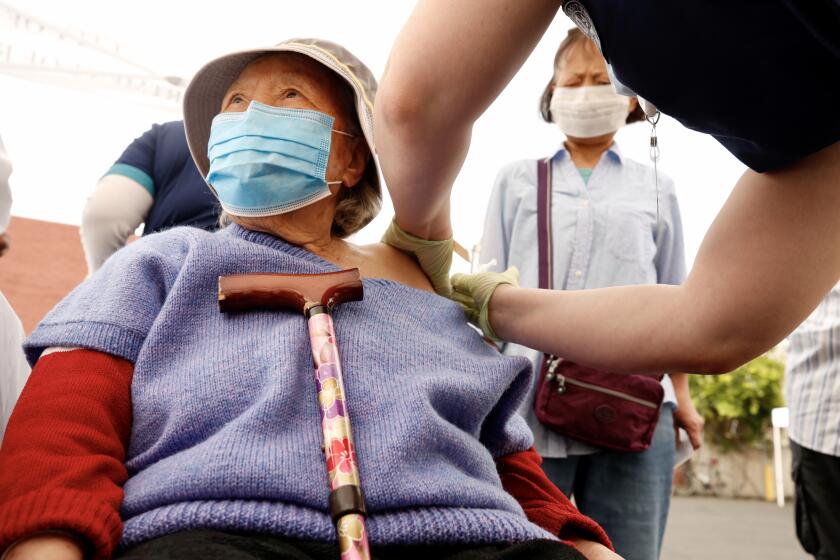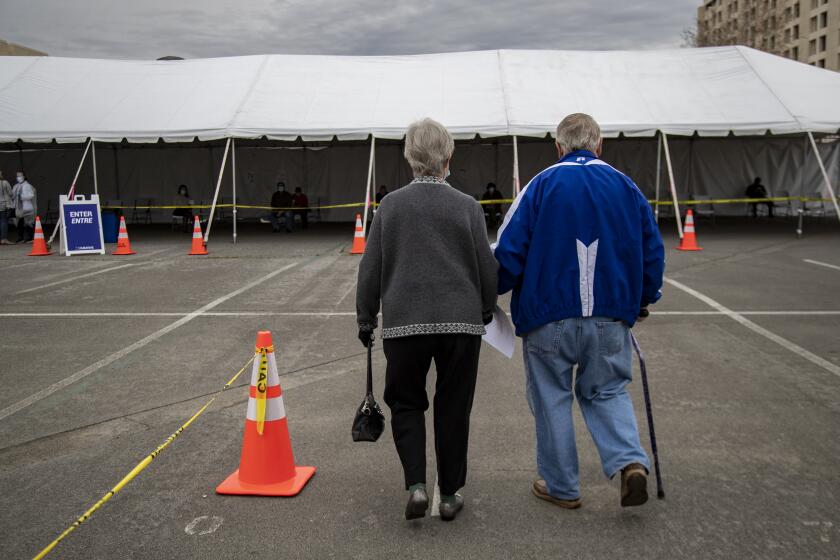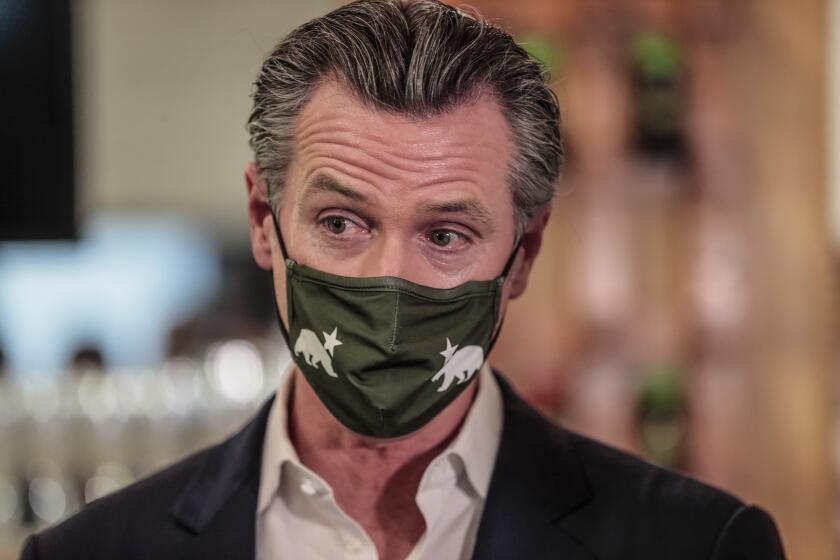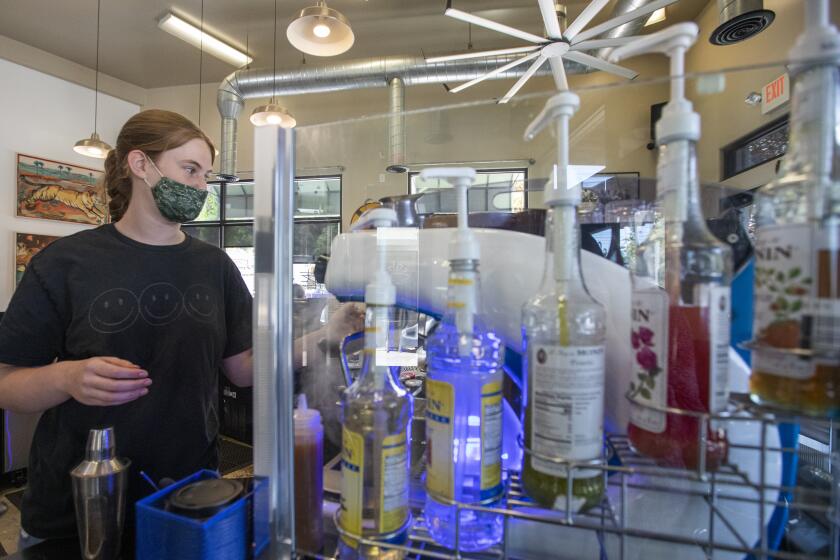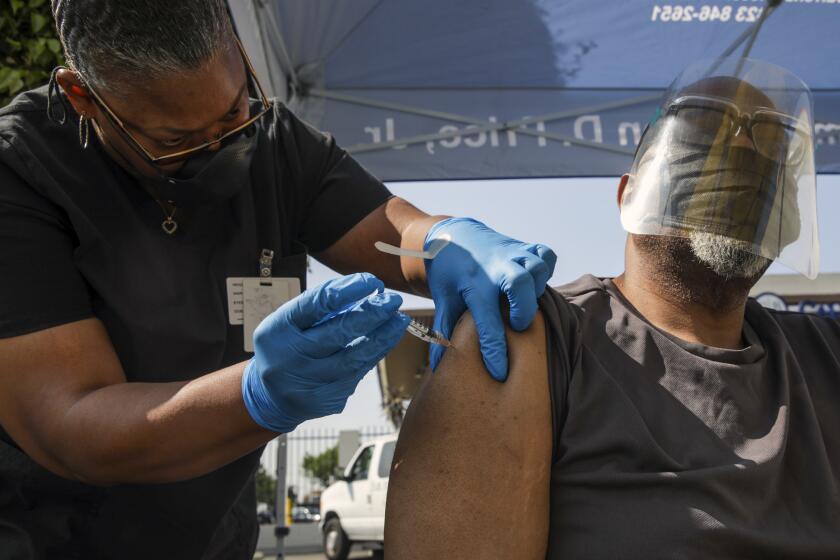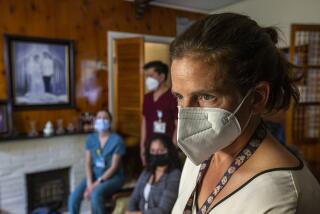California coronavirus hospitalizations hit highest point in months as Delta spreads
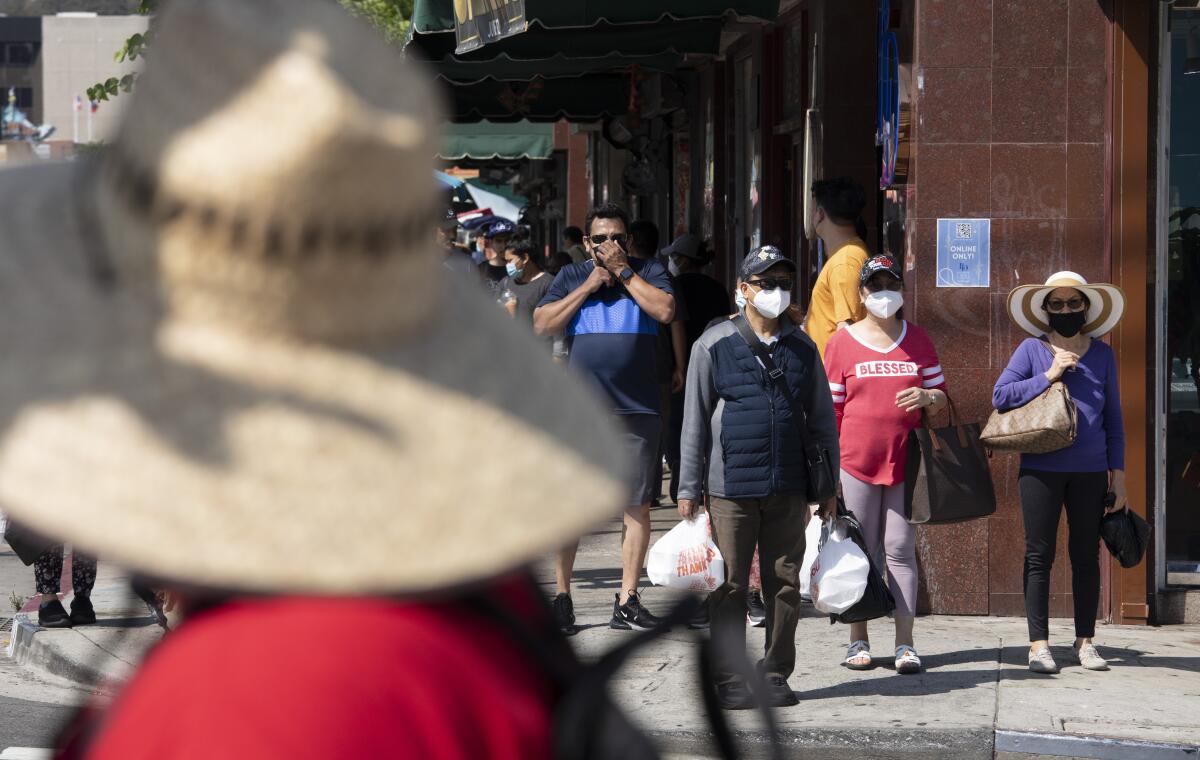
A spate of new coronavirus infections is striking Californiaâs healthcare system, pushing COVID-19 hospitalizations to levels not seen since early spring â lending new urgency to efforts to tamp down transmission as a growing number of counties urge residents to wear masks indoors.
Statewide, the number of coronavirus patients in the hospital more than doubled in the last month, and the numbers have accelerated further in the last two weeks.
Even with the recent increase, though, the stateâs healthcare system is nowhere near as swamped as it was during the fall-and-winter surge. And many health experts are confident that California will never see numbers on that scale again, given how many residents are vaccinated.
But with the continued spread of the highly infectious Delta variant, which officials fear could mushroom in communities with lower inoculation rates, the next few weeks are key in determining how potent the pandemicâs latest punch may be.
The recent increases confirm that nearly everyone falling seriously ill from COVID-19 at this point is unvaccinated.
âThis is a pandemic of the unvaccinated. And so, if you care about getting back to normalcy once and for all, please get vaccinated,â Gov. Gavin Newsom told reporters Tuesday.
Six more California counties are urging masks in indoor public spaces amid upticks in coronavirus cases and circulation of the Delta variant.
The fact that about 52% of all Californians are already fully vaccinated sets a ceiling on how many people remain exposed to potential infection.
Still, L.A. County Health Services Director Dr. Christina Ghaly said Tuesday that âthe individual consequences of a choice not to get vaccinated can be dire for that person and his or her family and friends.â
Ghaly said seeing a continued stream of COVID-19 patients, the vast majority of whom are unvaccinated, triggers a range of emotions in healthcare workers who have long been on the front lines of the pandemic: frustration, sadness and âsome level of disbelief that, after all of the pain and suffering that weâve all seen ⌠thereâs still people who either donât believe it or donât believe that it can affect them.â
The highest-risk Californians â notably the elderly â have been vaccinated at high rates. But the numbers drop off for younger segments of the population, and children under the age of 12 still arenât eligible to be vaccinated.
âI think sometimes the mentality is that people think, âWell, Iâm not going to get that sick. Iâm going to be OK. Iâm not going to die from COVID; Iâm young; Iâm healthy,â â Ghaly said. âAnd I can tell you, hopefully thatâs the case, but thatâs not necessarily the case.â
Los Angeles County is now recording more than 10,000 coronavirus cases a week â a pace not seen since March.
From June 22 to July 6, the daily number of COVID-19 patients hospitalized in California increased from 978 to 1,228, a nearly 26% bump, state data show.
Over the last two weeks, the daily count swelled by an additional 76%, reaching 2,164 as of Monday.
Californiaâs intensive care units also are filling up. As of Monday, 552 coronavirus-positive individuals were in ICUs statewide, more than double the total a month ago.
The latest numbers still pale in comparison to the peak of the last wave, when more than 21,000 COVID-19 patients were packed into hospitals and nearly 4,900 people were in ICUs on some days.
L.A. County officials say with COVID-19 cases and hospitalizations growing, they hope reinstituting masking as a social norm will help reduce disease transmission.
Officials have long characterized coronavirus transmission as a dangerous chain: The rising number of infections trigger corresponding increases in hospitalizations a week or two later and, eventually, an uptick in deaths.
However, inoculations have the power to interrupt that. Thereâs a wealth of academic and real-world data demonstrating the high level of protection afforded by vaccines, especially when it comes to preventing serious illness and death.
âWe have the tools to end this epidemic. It is up to us to utilize those tools to their maximum,â Dr. Anthony Fauci, the U.S. governmentâs top infectious-diseases expert, told a Senate committee Tuesday.
In Los Angeles County, for example, the number of hospitalized COVID-19 patients has more than doubled in the last month.
But out of the nearly 4.8 million people countywide who had been fully vaccinated as of July 13, only 213 â or .0045% â later ended up hospitalized for COVID-19.
It used to be hard to find a vaccine appointment. Not any more. Hereâs how to get your COVID-19 shot.
In Ventura County, Health Officer Dr. Robert Levin said recent data show that unvaccinated residents are 22 times more likely to be infected and hospitalized than those who have rolled up their sleeves.
âAll community members should take action to protect themselves and others against this potentially deadly virus,â he said Monday.
San Bernardino County hospitals also are âseeing a rising number of COVID-19 patients, and, if national statistics are any indication, they are all unvaccinated,â according to interim Public Health Director Andrew Goldfrach.
âWhat everyone needs to recognize is that we cannot end this pandemic until we have vaccinated the vast majority of our population,â Goldfrach said in a recent situation update. âIt was that way with polio, it was that way with smallpox, it was that way with the measles, and it will take mass vaccination to eliminate COVID-19. The truth is that we have it within our collective power to stop the sickness and deaths.â
Dr. Rochelle Walensky, director of the U.S. Centers for Disease Control and Prevention, has said that more than 97% of COVID-19 hospitalizations nationwide are among those who have not been vaccinated.
Newsom did not directly answer a question during a news conference in Sonoma County when asked about the possibility of a statewide indoor mask mandate.
Like hospitalizations, coronavirus cases have rebounded statewide over the last month â though theyâre nowhere near as high as previous surges.
Over the weeklong period ending Monday, California reported an average of 4,200 new cases per day, more than four times the level in mid-June.
During the height of the fall-and-winter surge, the state was recording more than 40,000 daily cases, on average.
And many experts believe the healthcare system is better armored against an uptick in infections this time largely because of vaccinations.
Of particular concern now is the Delta variant, which is believed to be twice as transmissible as the conventional coronavirus strains. Despite arriving in the state fairly recently, it has quickly become the dominant variant in California.
Like other variants, Delta is the result of natural mutations that occur as the coronavirus replicates and spreads. Reducing the number of infections, Ghaly said, limits the chances for the virus to adapt in even more dangerous ways.
âThe virus canât mutate without a host. It doesnât mutate sitting on a tabletop; it doesnât mutate sitting in a respiratory droplet in the air,â she said.
Given the risk Delta poses to those who have yet to be fully inoculated, 16 counties â including Ventura, Santa Barbara, Sacramento, San Francisco and Santa Clara â are now urging all residents, even those who have been fully vaccinated, to wear masks in indoor public settings such as grocery stores, movie theaters and retail outlets.
L.A. County is mandating that masks be worn in such settings.
Throughout the coronavirus pandemic, many health and law enforcement officials have favored educating residents about masking rules and urging adherence rather than writing tickets.
All of those counties have gone beyond the guidance issued by the California Department of Public Health, which continues to advise that fully vaccinated residents are allowed to go mask-free nearly everywhere, though uninoculated residents must still mask up in public indoor spaces.
When asked about the possibility of issuing a new statewide mask mandate, Newsom said Tuesday that âif we can get more people vaccinated, that answer is unequivocal: We wonât need it.â
âWeâre not looking to do any physical distancing, any social distancing. Weâre not looking to close anything down. Weâre fully committed to getting our kids back in school, in person, for instruction,â he said. âBut we need to get more people vaccinated.â
The city also rules that in indoor public settings, all people, regardless of vaccination status, must wear masks.
While the inoculation campaign has largely entered a more deliberate phase â one where officials, in cooperation with community groups and local leaders, are working on the ground to answer questions, dispel misinformation and build vaccine confidence â some areas are taking a different approach, at least when it comes to their employees.
Pasadena will require all city employees to be vaccinated against COVID-19 once the shots receive federal approval â the first municipality in Southern California to take that step.
San Francisco already has ordered all workers in âhigh-risk settings,â such as hospitals, nursing homes and residential facilities for the elderly, and jails, to be fully vaccinated by Sept. 15. All 35,000 city workers â including police, firefighters, custodians and clerks â also will need to get vaccinated or risk losing their jobs once a vaccine has been formally approved by the U.S. Food and Drug Administration.
However, the vast majority of cities and counties have yet to adopt that tactic.
Dr. Muntu Davis, L.A. Countyâs health officer, said last week that âwe do recognize that not everyone is going to get vaccinated, and we accept that. It is a personal decision at this time.â
But, he added, âIf you make a decision to not get vaccinated, make sure youâre doing everything you can to reduce your risk, especially at this moment.â
Times staff writers Faith E. Pinho and Rong-Gong Lin II contributed to this report.
More to Read
Sign up for Essential California
The most important California stories and recommendations in your inbox every morning.
You may occasionally receive promotional content from the Los Angeles Times.
